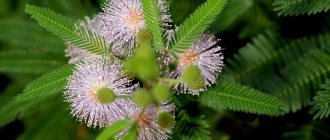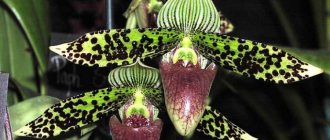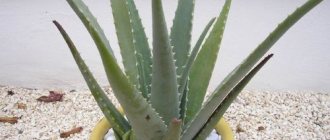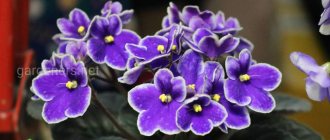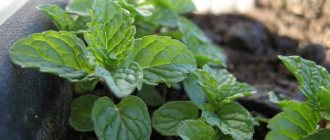Landing rules
For planting to be successful, you need to take into account a number of features.
It is important to choose the right bulbs and container for growing seedlings
Selection of capacity
To grow peonies at home, you need to choose the right pot. In this case, it is necessary to take into account the size of the plant
It is important to understand that culture needs a large area. A container with a diameter of 50-60 cm and a depth of 30-40 cm would be a suitable option.
Large varieties will require even more volume
Equally important is the presence of drainage holes at the bottom of the container. The optimal solution would be 5 liter pots
Note! Peonies can be grown in wooden boxes. To do this, they should be covered from the inside with dense non-woven material.
Preparing seedlings for planting
When purchasing a seedling, you should carefully examine the condition of the stem and root system. There should be no areas of rotting or mold on the planting material. If the plant has been damaged due to improper storage, excess fragments should be cut off. This is done with garden shears or pruning shears. It is recommended to make cuts obliquely and sprinkle with wood ash.
When growing peonies at home, it is worth treating them with a solution of potassium permanganate. This product has disinfecting properties. Before planting, the division should have 1-2 buds. If the eyes do not develop, the cutting must be placed in the refrigerator. When buds form, the plant can be planted in the ground.
Before planting, tubers should be treated with a solution of potassium permanganate.
Preparation or selection of soil mixture
In order for indoor peonies to develop well, it is recommended to fill the pots with a mixture of soil with the addition of peat. Plants must be planted in a container with a drainage layer. Thanks to this, it is possible to avoid stagnation of water, which provokes rotting of the roots.
Important! You can make the substrate yourself. To do this, it is recommended to mix humus, garden soil and river sand in equal parts
Step-by-step instructions for planting in a pot
To plant a crop correctly, you should do the following:
Place the tuber perpendicular to the moist soil
When choosing its location, it is important to ensure that the buds are directed upward. The flower reacts negatively to constant transplants. Therefore, it is not recommended to use containers that are too small for planting. Sprinkle the plant with soil on top and water it generously.
Important! In spring, you can feed the soil with fertilizer with a small amount of nitrogen. You can buy it in a specialty store
Planting peonies in a pot requires compliance with a number of conditions.
About drainage in pots with peony seedlings
When growing indoor plants in pots, drainage is usually used (for example, in the form of small shards placed on the bottom of the pot). It is believed that drainage prevents the soil from souring when it comes into contact with the bottom of the pot. Drainage also prevents houseplant roots from growing through drainage holes in the bottom of the pot.
Unlike indoor plants, pots with peony seedlings are placed on the ground. Therefore, the soil mixture inside the pot and the soil in the open ground come into contact with each other through drainage holes at the bottom of the pot. In this case, acidification of the soil in the pot does not occur. That is, laying shards on the bottom of the pot is not required. If you put drainage shards on the bottom of the pot, they will prevent both the flow of moisture into the pot from the ground and the germination of peony seedling roots through the drainage holes in the bottom of the pot. Both will negatively affect the development of the peony seedling.
Further flower care
After planting a peony, in order for it to take root in a new place and grow as quickly as possible, you need to organize proper and balanced care for it.
The planted flower should be placed on an unshaded, light windowsill. Light should fall on the peony for at least 12 hours in a row. If there is not enough light, it is necessary to install additional lighting, organized using fluorescent lamps.
Indoors, it is recommended to place the pot on the windowsill of windows facing southeast and south. In this case, the flower should be protected from drafts. You can even place the container with the plant on a glazed balcony, terrace or loggia.
Water the plant regularly. Water must be added after the top layer of soil (2 cm thick) has completely dried. At the end of summer, watering is reduced to ensure a smooth transition for the flower to a dormant state. At the same time, the lighting period should be gradually reduced, as well as the room temperature.
Additional spraying of peony is not carried out. It also does not require high humidity in the room. However, it is forbidden to place a flower pot near heating appliances.
During the growth process, the peony should be periodically fed, since this plant consumes a lot of nutrients, which leads to the rapid depletion of mineral reserves in the soil. Feeding is carried out in three stages:
- After the formation of the first stems, nitrogen-potassium fertilizers need to be added to the container. They will stimulate the peony to grow shoots;
- During budding, fertilizing with potassium, phosphorus and nitrogen is carried out. These substances will allow the flower to form large buds;
- 14 days after the start of flowering, phosphorus and potassium are re-introduced, which will allow the plant to recover after the budding period.
Each season the fertilizing cycle is repeated.
Is it possible to grow on a balcony?
The balcony is a great place to grow peonies. The flower will delight you if you follow all the tips regarding its growth.
To do this, optimal conditions should be provided:
- If the flower grows slowly in the spring, nitrogen-potassium fertilizers must be added to the soil. They help stimulate growth.
- If you notice that the flower is withered, you should install fluorescent lamps. They will supplement the lack of light, which will stimulate plant growth.
- Flower growers say that peonies can be grown on the balcony in winter. To protect the flower from freezing, it should be covered with material that retains heat.
With proper care of the flower, you can enjoy its flowering for a long time without cutting off the side buds. The flowers will be large. When they are cut, the flowering period increases to three weeks. After budding is completed, all stems must be trimmed. Fertilizing should be done with the addition of potassium and phosphorus. Due to these minerals, the shrub will delight gardeners with large buds. With the onset of autumn, the flower must rest. For this purpose, it can be moved from the balcony to a cool place, for example, to a cellar or garage. As soon as the new season arrives, the plant can be put back in its original place.
Care
In order for a plant to grow healthy and strong, it is necessary to create for it the most comfortable conditions for growth and development.
The light-loving flower needs a lot of sunlight. Peony should be placed on windowsills on the south and east sides, where there is very light for 12 hours. In places with low light levels it is necessary to install additional sources of artificial light. Fluorescent lamps should be located at least 20 centimeters above the plant and work about 14 hours a day. Experienced gardeners recommend connecting special timers to artificial light sources to automatically turn on the light in the morning and turn off the device in the evening.
Peony has a negative attitude towards strong wind currents and heating devices located nearby. In summer, experienced gardeners recommend placing flower pots only on glass areas and balconies.
The plant needs regular and moderate watering. To prevent waterlogging of the soil, watering should be carried out only after the top soil layer has dried to a depth of 2 centimeters.
At the beginning of autumn, it is necessary to significantly reduce the number of waterings, the level of illumination and lower the temperature for the flower to comfortably adapt to the dormant period. Peony does not need spraying or high humidity levels.
To form bright, large and beautiful flowers, peony needs large quantities of nutrients.
- In the spring, your pet needs mineral fertilizers that contain large amounts of nitrogen and potassium. These mineral elements will allow the flower to form strong and powerful shoots.
- During the period of bud formation, it is necessary to feed the plant with potassium, phosphorus and nitrogen, and 2 weeks after the start of flowering, phosphorus and potassium must be added to the soil.
This system of feeding pets should be carried out annually.
If the rules of care are not followed, the plant will have a sluggish and unhealthy appearance, as a result of which it will not be able to form fragrant and beautiful flowers.
The most common problems when growing home peonies:
- sluggish leaf blades and lack of buds - low light levels;
- slow formation of new shoots - insufficient application of nitrogen fertilizers;
- rapid formation of green mass and absence of buds - deep planting of rhizomes.
If water gets on flowers, fungal diseases and dangerous pests may develop.
How to properly plant peonies in a pot, see the video below.
How to prepare a peony for planting
The plant is quite controversial. It has a number of features that need to be taken into account when growing indoor peonies in a pot.
- Appropriate place. In order for the flower to bloom magnificently and delight the hostess, it is necessary to take care of a good “foundation”. It does not tolerate stagnant moisture and constant shadow. Using peat as a fertilizer is undesirable, because the capricious handsome man does not like it.
- The soil. The best environment for peonies grown at home in a spacious pot is drained and cultivated soil. It needs to be prepared two weeks before planting. It is necessary to plant only in loose soil, otherwise the roots will be deformed and the plant will not be able to receive nutrients. To prevent rot, you can sprinkle a little sand and ash on top of the soil.
- Seedling. Some housewives think that if you plant an adult seedling, the plant will immediately delight you with flowers. This is a mistake; most likely, the bush will die due to old age in two years. For perennial flowering, it is better to choose a young seedling.
- Depth - from the top bud to the surface of the ground should be left from 3 to 7 cm. If the soil type is heavy, then 4 cm is better.
Dig up and rinse peonies
Difficulties with digging up peonies are associated with the characteristics of their root system. Usually in the 4-5th year it grows to a great depth, individual rhizomes reach a length of 30 cm or more. The tips of the roots are most often thin and go even deeper into the soil. It is very difficult to dig them out without damage, so you should consider several recommendations:
1. Peonies should be dug up in dry and warm weather, so that the lump of earth that you will remove along with the roots is not too heavy.
2. Place the shovel 30-40 cm from the center of the bush and place it vertically. If you place it at an angle, you will most likely cut off the ends of the roots.
3. Dig up the bush from all sides and carefully remove it from the ground. You can place a support, such as a brick, under the tray of a shovel or the teeth of a garden fork. Thus, the shovel will act as a lever. Do not use too much force, otherwise you may break the tool. It’s better to dig around the bush more carefully again.
4. Under no circumstances pull the peony by its leaves (especially if the bush is more than 5-6 years old). Do not forget that before digging, the stems need to be cut, leaving stumps 5-10 cm high. It is for them, smoothly and effortlessly, that the plant should be pulled out.
Even if you did everything correctly, some of the roots will be damaged in any case. Clear the rhizome of clods of earth and rinse it thoroughly under running water, since a clean base is easier to mark and divide. This is also necessary in order to assess the condition of the buds and roots. After all, if a plant has stopped blooming in recent years, it is likely that it has already begun to rot.
Wintering peony seedlings in pots
Until the onset of stable frosts, peony divisions in pots can remain without shelter. No agrotechnical measures, including watering, are carried out at this time. With the onset of frost (approximately in the second half of October), the pots with divisions are covered with a thin layer of fallen leaves and covered with lutrasil.
In the spring, after the snow melts, Lutrasil is removed. The pots are freed from excess leaves so that they do not interfere with watering in the future. The soil level in the pots should be approximately 1 cm below the edges of the pot. This is necessary to ensure normal watering of the plants.
Transplanting peonies
When to replant peonies
Wild peonies grow in one place for up to fifty years or even more. Hybrid varieties that originate from the officinalis peony can grow without replanting in the same area for no more than ten years; after this period, the bush must be divided and transplanted to another place. In addition, dividing and planting the bush is the easiest and most reliable way to propagate peonies. But for this purpose, 4-5 year old bushes are used, which have already fully bloomed once or twice. The fact is that the root system of peonies grows greatly over the years, so it is easier to cope with a younger rhizome than with an old one, so in order to ensure that the quality of flowering of your peonies does not decrease, it would be better to divide and plant the bushes every three to four years . Peonies are replanted in September.
In the photo: White peony flower
Replanting peonies in autumn
How to replant peonies? In autumn, the bush is dug at a distance of 25 cm from the rhizome, then carefully loosened with a pitchfork and removed from the ground. The rhizome is cleared of soil with a peg, then washed with a not very strong stream of water so as not to damage the fragile buds and eyes of peonies.
The above-ground part is cut off almost to the root. The washed rhizome is left in the fresh air so that the water drains and the roots slightly wither and become more elastic. Then the old thick roots are trimmed to a length of 10-15 cm at an angle of 45º.
Carefully examine the root and only then proceed with division.
If the bush is old, then it is most convenient to drive a wedge into its middle with a hammer, which will split the rhizome into several parts. Often in the middle of old rhizomes there are voids and rotten areas that need to be cleaned, disinfected with a strong solution of potassium permanganate, and then the sections are powdered with fungicide. The divisions should consist of part of the root collar with well-developed 3-4 eyes and several roots. You need to try to divide the rhizome into approximately equal parts, so that there are no too large sections that will hurt for a long time after transplantation, or too small ones that may die.
In the photo: Growing peonies in the garden
How to replant peonies
You need to plant the cuttings in the ground using the method that has already been described. The area with transplanted plants must be mulched with a seven-centimeter layer of peat for the winter; the mulch can be removed when reddish peony sprouts break through it in the spring. During the first two years after transplanting, peonies must develop a root system, so be patient and do not let young plants bloom. In the first year, pinch off all the buds that appear, the next year, leave just one bud on the bush and, when it bursts, cut it as short as possible and consider how well the flower matches its variety. If the match is incomplete, then you will have to pinch off the buds for another year, leaving only one, until the flower fully matches its variety. This may happen in the third year, or maybe in the fifth.
Varieties of peonies
The species diversity of peonies includes more than 40 thousand varieties. Breeders have bred many hybrids that differ in the color and shape of flowers, leaf blades, and also in the height of the bushes. Hybrid varieties are used in floristry to create bouquets. © https://ydoo.info/qa/kak-vyrashchivat-piony.html The peony flower, a familiar flower to everyone, which can be found in almost any area, is not only an ornamental, but also a medicinal plant.
Peonies are divided into 5 groups:
- Non-double.
- Japanese.
- Anemone-like.
- Semi-double.
- Terry.
Non-double peonies include the “Katyusha Dubrova” variety, which has a large flower (20 cm in diameter) with corrugated bright pink petals. Inside the cup-shaped inflorescence there are many small bright yellow stamens. Medium late variety. Flowering lasts 10 – 15 days. The bush has a beautiful, slender, decorative appearance and reaches a height of 70–90 cm. The peony was bred by Russian breeders and is currently popular among flower growers and florists.
Japanese peonies are distinguished by their original inflorescence shape and are considered one of the most expensive varieties. “Hot Chocolit” is a Japanese peony and has a rich wine color with a purple tint. The cup-shaped flower with wide petals reaches a size of 16 cm in diameter and has a faint aroma. Decorative bush does not exceed 90 cm in height. The plant combines harmoniously with other flowers in the flowerbed, and the bright colors of the flowers look good against the background of wide light green leaves.
The Japanese variety "spiffy" reaches a height of 70 cm and has an original flower shape. The outer petals are large, red-pink in color. Inside there are lush white and pink petalodies.
“Rhapsody” belongs to the anemone-like peonies and has a pronounced, but at the same time delicate aroma. The height of the bush does not exceed 80 cm, and the diameter of the flower ranges from 12 to 15 cm. The lower row of petals is soft pink in color, followed by an edging of numerous narrow cream petals, and in the center there is a pink rosette with purple-red edges. The original shape and color won the hearts of flower growers. The plant is unpretentious in care and harmonizes well with other varieties of peonies.
Semi-double peonies include the early variety “Miss America”. The pink flowers turn white over time; the petals are arranged in 6 rows. The diameter of the flower reaches 25 cm, and the height of the bush varies from 60 to 80 cm.
The “iceberg” variety is a representative of terry peonies, reaching up to 1 meter in height. The flowers are large, snow-white, ranging in size from 15 to 20 cm.
Tree peonies have the appearance of a lush shrub with a height of 1.5 to 2 m. Unlike other varieties, the stems of this plant do not wither at the end of the season. Every year the bush grows, acquiring a spherical shape. Flowers with a diameter of 12 to 20 cm can be painted in a variety of colors.
Landing rules
The most favorable time for planting plants is the beginning of spring. To plant home peonies, you need to choose flower pots with a volume of at least 5 liters and a diameter of 25 centimeters. The optimal height of the planting container should be 45 centimeters.
Peonies can be planted not only in classic flower containers or pots. Wooden boxes, the inner surface of which is covered with dense non-woven material, are also quite suitable for this.
When making your own soil mixture, you need to mix river sand, humus, peat and garden soil. To this composition you need to add a small amount of bone meal, ash and superphosphate.
For planting, you need to select shoots from the root system of those plants whose age does not exceed 3 years. Planting material can be planted only after the first buds appear. Until this point, the shoots should be stored in the refrigerator.
List of basic activities that will help to properly plant a decorative peony:
- choosing a flower container;
- formation of a drainage layer, which may consist of fine pebbles, broken bricks and perlite (layer 3–5 centimeters);
- covering the pebbles with coarse sand (but not river sand!);
- filling the planting container to the middle with nutrient soil;
- placing selected roots on the ground, the buds of which should be directed upward;
- filling all voids with a nutrient mixture;
- formation of a surface peat layer;
- abundant soil moisture.
This flower has a negative attitude towards frequent transplants. Experts recommend not using very small planting containers for planting.
If all planting rules are followed, the plant will be able to form buds within a few months.
Choosing pots for planting peonies
Let's look at the question: what kind of pots (by material, shape, volume) are recommended to be used for growing peony seedlings.
The most widely used plastic pots for growing peony seedlings are square and round. The square side size (or diameter) of the pot should be approximately equal to the height of the pot.
The volume of the selected pot is determined depending on the size of the peony section planted in it. In practice, the minimum volume of pots for growing peony seedlings is 0.5 liters, and the maximum is 7 liters. The most commonly used pots are 1 L, 2 L and 3 L. The volume of a pot with a peony seedling for its sale must be at least 1 liter.
Drainage in the planting hole for peonies
Many novice gardeners, concerned about how to plant peonies in the garden, are interested in whether drainage is needed at the bottom of the hole? Quite often in the literature for drainage it is recommended to pour a layer of crushed stone, stones and broken bricks onto the bottom of the hole. But such a recommendation cannot be universal and it is not entirely clear when it will be useful. If the soil around the hole, especially from below, is clayey, there is no benefit from drainage, like shards at the bottom of a pot without holes - the water still has nowhere to go. And if the soil around the pit is sandy, you do not need drainage, but, on the contrary, clay in the bottom layer of the pit to retain moisture there longer.
Local drainage in the planting hole when planting peonies will not protect the flowers from nearby groundwater. In this case, it is necessary to install a general drainage system at the planting site that can lower the groundwater level. Or drainage grooves if the planting area is low. For the latter case, raised raised ridges have already been recommended.
Advantages of growing peony seedlings in pots
Firstly, many peony lovers became dissatisfied with the situation when the exchange of planting material or its sale could only take place in the autumn. True, some amateur flower growers practiced piling up divisions of peonies until spring. However, the procedure for handling such pion divisions is very low-tech, and it could not be carried out in large volumes. Pot technology for growing peony seedlings provides the potential to provide gardeners with planting material in the required quantities, theoretically all year round.
Secondly, many peony lovers have encountered a situation where in the fall, after dividing the peony bush, a certain number of divisions remain that cannot be planted in the garden due to the lack of free space at the moment. Although it is known that next season there will be free space. Planting peony cuttings in pots and preserving them until the next season can also help here.
The third case concerns especially rare varieties of peonies, when even the smallest sections with one bud are valuable. Usually they are planted for growing in special beds (but they are easy to lose there). When planting them in a pot, the safety of such tiny pieces is incomparably higher.
In the photo: herbaceous peonies
What conditions must be observed when caring for decorative peony?
For good growth and lush flowering, perennials need suitable conditions.
Pay attention to the following points:
- temperature;
- watering, humidity level;
- lighting;
- application of fertilizers.
Temperature
In a very warm room, peony root formation stops. Recovers at a temperature of 10-15 °C. The plant overwinters at 5-8 °C.
Watering and humidity
Water the perennial with water at room temperature when the soil surface is dry to 1.5-2 cm. The liquid is distributed over the entire surface of the container; the flowers cannot tolerate excessive watering. The remaining moisture should exit through the drainage hole. At the end of summer, the frequency of watering is reduced: wait until the soil in the container dries completely, then only moisten the soil.
Note! The flower does not tolerate spraying or droplets falling on the leaves and petals.
Lighting
For the development of inflorescences, select the brightest place for peonies in the apartment. The south side of the room works well. It is not always possible to find a sufficiently illuminated place; in this case, peony lovers will be helped out by an LED phytolamp. The light spectrum ensures active growth. The device can be brought fairly close to the leaves; the LED has a low voltage, which increases its safety when water gets on the body. The time for using artificial lighting is reduced at the end of August, as preparations for the dormant period begin during this month.
Feeding
When the first stems appear, the soil begins to be fertilized. Feed the plant once every 30 days. For this purpose, prepared mixtures for perennial flowers are used; fertilizing stops at the beginning of autumn. Ash and sand are used as protection against mold; ready-made fertilizers with nitrogen are selected in flower shops. During the ripening period of the buds, potassium and phosphorus are added to the soil. When the shoots reach 10 cm in height, fertilize once every 14 days.
How to care for a peony in winter
In winter, reduce the frequency of watering. Place the pot in a cooler and less lit place. They do this in order not to provoke the beginning of the growing season. The flower is left dormant for the winter.
Is it possible to transplant an indoor peony outside?
To transplant into open ground, indoor peonies must undergo preparation. In autumn, seedlings are placed in a pot, observing dormant conditions. At the beginning of spring, the plant is added dropwise along with the container. At the end of August they are transferred to the ground.
Peonies remain dormant for 3 months before planting in the garden plot.
Lush bright red or soft pink peony buds can please the eye not only in the garden. The plant is easy to plant and grow, you just need to create the conditions necessary for its development.
Varieties for home cultivation
First of all, you should decide which varieties can be grown in an apartment or house. The fact is that the peony is a rather tall and voluminous bush, which is unlikely to fit in an ordinary flower pot. And it is very difficult to grow such a plant in an apartment. Therefore, flower growers recommend choosing special varieties for home cultivation.
Garden varieties form bushes with a height of about 60–120 cm. Therefore, they are not suitable for apartments, as they require a lot of space, large pots and special care. For home use, low-growing species (patio peonies) that do not grow higher than 50 cm are best suited. Patio species form buds that are somewhat smaller in size than ordinary garden varieties. The color of flowers can be very diverse: from white to rich or dark burgundy. However, despite their small size, their flowers exude a pleasant aroma. Due to the small size of the plants, their root system is small and easily fits in a flower pot.
It is best to plant the following varieties of peonies in an apartment:
- Rome. Forms pink buds. Has a medium flowering period;
- Moscow. The plant blooms with red double flowers. This is a mid-early variety;
- Oslo. The bush produces simple raspberry buds. A very early flowering variety;
- London. It has an early flowering period. The buds are double and colored burgundy.
Such species can be grown on a windowsill with little effort and time.
Description
Peonies are one of the most beautiful flowers grown for gardens, flower beds and as potted plants. For planting in open ground, gardeners choose tall and powerful plants, the height of which can exceed 100 centimeters. Breeders do not recommend planting tall varieties in small planting containers. For home cultivation, you should choose low and miniature plants, the maximum height of which will not exceed 45 centimeters. Low-growing varieties of peonies differ not only in the size of the bush, but also in the size of the flowers.
The color range of home peonies ranges from white to purple.
Flowers of potted varieties have a rich and persistent aroma, which is no different from the smell of the garden variety. And their root system, of course, is of the same small size and feels comfortable even in small planting containers.
Flowering plants perfectly decorate living spaces. Housewives strive to plant garden specimens in their homes, among which the peony occupies a special place. By following the recommendations of experts, you can decide on the variety. If you follow all the rules for care and cultivation, the plant will delight gardeners.
Growing indoor peonies at home
Peonies are a spectacular decoration of gardens, a powerful bush with large and fragrant flowers. But growing such a bush at home is not easy. If it is not possible to create optimal conditions for growth for a potted peony, its shoots grow weak, sluggish, and flowering never occurs. Only with some effort can you ensure that a garden plant becomes a decoration of your residential interior; the result sometimes exceeds expectations.
Common varieties of garden peonies reach a height of 60-120 cm, so growing them indoors requires a lot of space. More popular among indoor plant lovers are low-growing varieties - patio peonies, reaching half a meter in height. Their varieties:
- “Rome” – variety with pink flowers of medium flowering period;
- “Oslo” is a variety with simple crimson flowers of very early flowering;
- “Moscow” – mid-early variety with semi-double red flowers;
- “London” is an early variety with double burgundy flowers.
The flowers of patio peonies are somewhat smaller in size than the flowers of garden herbaceous peonies, although they retain their fragrance. But they are also characterized by a smaller root system, which makes it possible to grow low-growing varieties in closed ground conditions. The color palette of these varieties is very diverse: from snow-white to dark burgundy. Flowers are simple, semi-double and double.
For planting in a pot, use rhizomes that are 2-3 years old. Under optimal conditions, they can begin to bloom within a few months of planting. There are 3 main conditions for successfully growing indoor peonies:
- 1. spacious capacity for the root system;
- 2. prolonged sunlight;
- 3. sufficient supply of water and mineral elements.
A pot for growing a peony must have a volume of at least 5 liters and a diameter of more than 30 cm. The depth of the pot must exceed the diameter and be at least 50 cm. Such plants do well in large wooden boxes lined with thick fabric. There must be drainage holes in the bottom of the container to avoid stagnation of water and souring of the roots.
Peony is planted in a pot in the spring. A layer of large pebbles or sand, broken bricks, and perlite is placed at the bottom of a suitable container for proper drainage, then the pot is filled halfway with a mixture of garden soil and peat. This layer is well moistened with water, and the rhizome is carefully placed on top with the buds facing up, trying not to damage them. Next, the rhizome is covered with soil, but it should be close to the surface, no deeper than 2-3 cm, otherwise the plant may not begin to grow. Peony does not tolerate transplantation well, so it should be planted immediately in a large pot.
The indoor peony is placed in a bright, unshaded place; it needs at least 12 hours of sunlight per day. An open balcony, loggia, or terrace is well suited for this. Indoors, the plant should be placed near a wide window in the south or southeast side, but in a place protected from drafts. When daylight hours are short, additional illumination is practiced using fluorescent lamps. Watering is regulated in accordance with soil moisture - after the top layer of soil 2 cm thick has completely dried. The plant does not need spraying and does not require high air humidity. But you should not place it near heating devices that create a flow of warm, dry air.
During the growth process, large indoor plants consume a large amount of nutrients, so the supply of mineral elements in the soil must be regularly replenished. When growing peonies, mineral fertilizers are applied in 3 stages:
- after the first shoots appear, nitrogen-potassium fertilizers are applied for shoot growth;
- during the budding period, fertilize with nitrogen, phosphorus and potassium to obtain large flowers;
- 2 weeks after flowering, potassium and phosphorus are added to restore plant resources.
At the end of summer, watering indoor peonies should be reduced to provide conditions for it to smoothly enter a state of dormancy. At this time, the length of the photoperiod is shortened and the growing temperature is reduced.
Even low-growing varieties of peonies are difficult to grow indoors. The root system of this plant needs space, and the above-ground part needs an abundance of light. Only by creating optimal growing conditions can peony bloom at home, even though this plant is considered unpretentious in the garden.
{SOURCE}
Suitable varieties
If for garden growing they prefer tall varieties (0.7-1.2 m), then for indoor growing they choose among miniature plants. Their height does not exceed 50 cm, they do not require large tubs and complex care. Miniature peonies have a compact root system that fits perfectly into small pots. Although the low-growing representatives have slightly smaller inflorescences than garden peonies, their aroma is just as strong, and the color range is very diverse - from snow-white to dark burgundy. Among the variety of varieties, the following are distinguished:
- "Rome". Peony from the Patio Peony variety series attracts attention with its anemone-like pink flowers with a yellow center. The petals are wide, arranged in 1-2 rows in the flower. The height of an adult specimen does not exceed 60 cm.
- "Moscow". Representative of the same variety series. A low bush of 35 cm is formed by strong shoots with dark green leaves. During flowering, which occurs in June, bright red flowers with a diameter of 6-10 cm open.
- "London". Milky-flowered peony of hybrid origin. An early flowering variety with magnificent, densely double inflorescences. They are painted in a rich dark red tone.
A luxurious bouquet of snow-white large inflorescences with tall creamy golden centers forms the “Dublin” peony. It looks organically in a flowerpot.
Features of planting at different times of the year
Healthy and intact suction roots are the key to successful establishment of young plants
To determine how to plant peonies and when to do it, you need to have an idea of the characteristics of their root system.
- Its central, most massive part serves as a kind of storehouse for nutrients. It is this that supports the plant during wintering and protects it from the cold.
- Thinner processes extend from it. The density and abundance of flowering bushes depend on their condition, since replacement buds and young stems are formed on these roots. Sprouts in the form of light, thin root shoots are formed in the fall, in September.
- Another important part of the root system is the suction shoots, which can be thought of as a thin web that collects micronutrients and moisture. To avoid damaging it, when planting peonies it is necessary to prepare a wide and deep hole.
To choose the right moment when you can replant peony bushes, you need to know the peculiarities of crop adaptation at different times of the year.
in spring
Transplanting peonies in spring has one significant drawback: it is easy to be late with this work.
With the end of winter, the plants wake up. There is a rapid growth of suction roots. If you start replanting the bush during this period, these roots can be damaged, which threatens the death of the entire plant. It will not receive nutrition and will quickly use up the reserve that has accumulated in the massive central roots.
Important! Bushes that have been transplanted in the spring often become overgrown with a thick green mass. But next winter they do not survive, since over the summer their storehouse of useful substances is used up, and there are not enough of them for the winter
If you still replant the bushes after wintering, then this should be done as early as possible, immediately after the snow cover melts, before the plants awaken. By this time, the roots do not have time to wake up. They begin to develop in a new area.
In summer
In June and July, the crop actively grows green mass, and the suction roots have time to grow and gain a foothold in the soil in the spring. Their development slows down, but the roots actively extract moisture and nutrients. When buds form on the bushes, the main forces of the plant are directed to the flowers.
If you replant peonies in the summer, the suction roots will inevitably be damaged and the nutrition of the bushes will deteriorate. In the new area, neither the development of new roots nor the adaptation of old ones occurs. The only source of nutrition is the reserves already made by the plants. But there are not enough of them for wintering, which often leads to the death of peonies.
According to statistics, most bushes transplanted in summer wither within a month
in autumn
In autumn, peonies stop blooming and begin to prepare for winter. The green mass is not growing. Plants store nutrients. Their absorbent roots actively extract nutrients and grow quickly. This period is considered the best time to plant peonies. The bushes are ready to be divided and moved to a new site. The roots are ready for the winter cold.
One month is enough for the culture to take root normally. Before frost sets in, peonies have time to grow suction roots. In the northern regions, planting can be done as early as mid-August. In the middle zone, the optimal time is in September, and in the south it lasts until mid-October.
Note! When replanting bushes in the fall, it is important not to be late. On average, at the end of September there begins a period of active growth of storage roots, where plants retain a supply of necessary elements. They become denser and more voluminous
Transplantation must be carried out before this time, otherwise the bush will not survive the winter.
They become denser and more voluminous. Transplantation must be carried out before this time, otherwise the bush will not survive the winter.
On average, at the end of September there begins a period of active growth of storage roots, where plants retain a supply of necessary elements. They become denser and more voluminous. The transplant must be carried out before this time, otherwise the bush will not survive the winter.
The necessary conditions
To get lush blooming peonies in your own apartment and grow a healthy bush, it should be as comfortable as possible. If the flower was planted improperly, the shoots will form weak. In this case, flowering may not occur.
Basic conditions that must be observed when growing peony at home:
- Wide and spacious pot.
- Compliance with light conditions.
- Proper watering and regular fertilizing.
To make the lush plant comfortable, you need to choose a pot of at least 5 liters. If you don’t want to plant it in a pot, you can replace it with a box. Whatever container is chosen, it is worth making drainage holes. Excess moisture that the flower does not need escapes through them.
How to plant and grow seedlings
Flower growers with many years of experience recommend planting shoots that are no more than three years old. Planting material can be planted as soon as the first buds appear.
How to do it right:
- Place the tuber perpendicular to the moist soil. When choosing a position, you want the buds to grow upward.
- It should be borne in mind that the flower has a negative attitude towards constant transplants. For this reason, small planting containers cannot be used.
- To check the recommended depth (2.5-5 cm), place the tuber at the top of the soil mixture. Compliance with this parameter is considered a priority when planting, as it will ensure the flowering of peonies.
- After determining this indicator, you need to mix water with the mixture so that it becomes wet.
- To ensure that the soil receives the right amount of nutrients before planting, you need to add compost. You can also use special organics.
- In the spring, fertilizer with a low nitrogen content should be added to the soil. You can purchase fertilizers in specialized stores.
Growing from seeds
Growing peony from seeds is an ineffective method of propagation. The properties of the variety are not always preserved in the seed material, especially in hybrids. Plants planted with seeds begin to flower 5 years after planting.
- The seeds ripen at the end of summer. Light brown, shiny specimens are chosen for sowing. Selected planting material can be immediately planted in the ground.
- It is necessary to bury the seeds no more than 5 cm. The distance between seedlings should be 15 - 20 cm.
- Seeds are planted in early September. It must be taken into account that seedlings may be uneven. Some seeds will germinate next spring, and the rest will germinate a year later.
- Peony seedlings can be grown at home in pots. Before sowing, the seeds are poured with warm water and kept for two days. The soaked seeds are planted in a flat plate with sand.
- The container with seedlings is placed on a heating pad and heated to +30 degrees during the daytime. At night the temperature is maintained at +15…+20 degrees. Watering is carried out from a spray bottle as the soil dries out.
- When the seeds hatch, they are transplanted into fertile soil to a depth of no more than 3 cm. The container is kept at a temperature of +10 degrees until the first leaves appear. Next, the seedlings are stored at room temperature, constantly maintaining soil moisture.
Transplantation of seedlings into open ground is carried out from mid-August to early September.
Features of caring for tree peonies in pots
- You should select spacious (up to 25-30 liters), thick-walled containers made of decorative ceramics, in which plants can be kept for 5-6 years without replanting. Containers made of wood or stone with outlet holes for good water drainage are also suitable. Pots made from these materials look visually good and reliably protect the earthen ball around the roots from overheating.
- It is also possible to plant peonies in plastic flowerpots, but in order to protect the roots from excessive fluctuations in ambient temperature, you need to dig them deeper into the soil, approximately equal to the surface of the soil in the garden.
- Hydrogel (3-4 spoons), initially added to the potting soil mixture, will also help protect plants from rapid drying out. After all, the soil in the container dries out quite quickly.
- It is advisable to apply fertilizers diluted with water and in reduced concentration. The soil balance in the local space of the container is easily disturbed if plant feeding is done incorrectly, “by eye”. In this case, the risk of excessive stimulation of root growth cannot be excluded.
- For plants in pots, foliar feeding once a month is well suited.
- It is preferable to water from below, pouring water into the pan.
- 65% topsoil and 35% perlite will ensure sufficient soil looseness and good drainage.
- Adult (5-6 year old) plants can be divided and planted in prepared containers.
Earth mixtures for growing peony seedlings in pots
Self-made earthen mixtures are much cheaper than purchased ones. In addition, in this case, you can try to compose soil mixtures according to different recipes, most suitable for growing peony crops.
For example, the following composition of the soil mixture (by volume) is quite universal, affordable and effective: humus - 3 parts, peat - 2 parts, river sand - 1 part. The readiness of humus is determined by the absence of earthworms in it; otherwise, the humus is not yet ripe. Add 30 g of universal fertilizer and lime to a bucket of soil mixture. Before use, the prepared soil mixture is sifted through a sieve (with cells of 7-8 mm).
How to save peonies before planting in spring
If the desire to purchase a peony rhizome of the desired variety at an attractive price turned out to be stronger than the reasonable decision to wait with the purchase until the right time, nothing terrible happened. Peonies can be saved at home and planted in the garden when the time comes.
First, you need to inspect the planting material. If rotten areas or other damage are found on the root of the plant, they must be cut out with a clean knife.
The cut areas are treated with a raspberry solution of potassium permanganate or brilliant green, or a solution of any fungicide.
If the peony rhizomes are in a dormant state, thin young roots are not visible on them and the growth buds have not yet awakened, the peony can be stored in the refrigerator. The herbaceous peony is wrapped in slightly damp moss or a flannel cloth dipped in a solution of phytosporin or plain water.
Then the root is put into a bag (not the one in which the plant was sold!). You must make holes in the bag with an awl for air circulation.
Technology for planting peony cuttings in a pot
It is recommended to dig up and divide the mother peony bush, the cuttings of which will be planted in pots, in cloudy weather. Or, at least, work in the shade, in the late afternoon. The lateral roots of peony divisions should not be removed. The cut areas are treated with crushed coal. The resulting divisions of peonies are planted in pots immediately, without drying them out, especially in the sun.
The pot is selected according to the size corresponding to the size of the division. Fill it with soil mixture to a level that ultimately ensures that the peony division buds are buried 2-3 cm from the soil surface. The planted plot is lightly dusted with ash, placed in a pot, covered with a 2-3 cm layer of soil mixture. Excess soil (everything above the edges of the pot) is removed. The soil is lightly compacted and watered using a watering can with a fine spray mesh. The pot is provided with a label with the name (number) of the variety and placed in the place designated for growing seedlings. At the same time, make sure that there are no voids between the bottom of the pot and the soil on which it is placed. The latter is necessary so that moisture can enter the pot from below, and the young roots of the seedling can grow into the ground through the drainage holes of the pot.
Specifics of planting a tree plant
Planting tree peonies and caring for the plant differ little from the rules provided for herbaceous varieties. You just need to take into account that these flowers can stay in one place for up to half a century. The location for such a landscape element should be chosen very carefully. Don't forget about the dimensions of the bush.
When landing, the following rules are taken into account:
- between the bushes, between the peony and the wall, the distance should be about one and a half meters;
- the hole for the seedling is about a meter in diameter, 70-80 cm deep;
- It is advisable to plant the plant in early September.
Tree peonies can remain in one place for up to half a century
Using step-by-step photos of planting tree peonies and caring for them, you can study the features of the procedures.
Planting process step by step
To grow special varieties of peonies at home yourself, you need to know the sequence of actions. Indoor varieties of peonies must be planted in the spring. Landing instructions:
- The bottom of the container must be laid with a drainage layer. To do this, you can take pebbles or pieces of brick. Sand is poured on top.
- The pot needs to be filled halfway. The filler is a mixture of garden soil and peat. Moisten with water.
- Set the rhizome on top of the soil. Sprinkle it with 2-3 cm of soil. If you cover it too much, the plant will not develop.
- Fill the pot with the rest of the mixture.
- Feed with fertilizer and water generously.
The plant does not tolerate numerous transplants. It is necessary to immediately select a wide container to minimize the number of further manipulations.
Moisturizing and mulching the soil
Not only planting, but also caring for and growing peonies is not a difficult task requiring special skills. These plants have few requirements. They are needed periodically:
- water,
- loosen,
- feed
- protect from pests and diseases.
We should not forget that in the first half of the day the flower needs intense sunlight. If the bushes located next to it, growing, create a dense shadow, they need to be trimmed in a timely manner.
Peonies need intense sunlight
In the spring, during the first month of summer, the peony needs abundant watering if the weather is dry. Every 10 days you need to pour out 2 buckets of water per 1 sq.m. This promotes the formation of buds on the rhizomes. During the flowering period, and after it, peonies can be watered no more than once every 2 weeks. For 1 sq. m requires about 4 buckets of water. There is no need to carry out deep loosening; this can damage the root system.
Variety of tree peonies
Many summer residents and owners of suburban areas are now interested in the rules for planting and caring for tree peonies. Relatively recently, these plants began to be used in landscape design in our country. The highest popularity of these species is observed in Japan and China.
The tree peony bush can reach two meters in height. In landscape design, the following varieties are mostly used:
- European-Chinese terry;
- Japanese terry, semi-double;
- hybrid.
Terry peonies, bred by European and Chinese breeders, have a wide color palette. During the flowering period, shrubs are covered with large buds with a huge number of petals. Each flower has a significant diameter, and therefore a lot of weight. The branch cannot withstand such a load; supports are required.
Terry peonies are distinguished by a huge number of petals
Increasingly, flower growers are interested in the rules for caring for and growing Japanese tree peonies. In this category there are double and semi-double species, and a wide range of colors. Unlike their European and Chinese counterparts, the buds are light in weight. The shrub does not need supports.
The main attraction of hybrid plants is their yellow color, which is not typical for peonies. Bushes perfectly decorate the garden not only during flowering, thanks to their openwork foliage and splendor. To obtain them, herbaceous and shrubby varieties were crossed. The shape of the foliage of the plant follows the tree-like varieties. But the stems die off by winter, like herbaceous varieties. The rules for planting and caring for Ito hybrid peonies are identical to the recommendations provided for other species.
Ito peonies with atypical yellow color
Currently, there are many varieties of bush peonies on the market. Breeders have managed to develop several species that can survive our cold winters without loss.
Growing peonies at home
Many gardeners practice growing peonies at home. The germination process usually takes about two months. The following procedures must be followed:
- for seeds, prepare a substrate in a ratio of 1:3;
- place the seed material in a strong solution of potassium permanganate for ½ day;
- steam the substrate with boiling water;
- Once a week, pour out the mixture, stir, and moisten if necessary.
After the warm period, a cold stage must begin. To do this, the container with seeds and substrate must be placed in the refrigerator on the bottom shelf and stored for 90 days.
If dried seeds are used to grow peonies at home, they must be soaked before placing them in the substrate. They should lie in water at room temperature for two days. After this, during the warm period they should be in sand, which is well moistened in the first days for swelling. The container must be placed on a radiator or electric heating pad. The warm period lasts 2 months. At this time, the seeds take root.
The germination process takes about 2 months
Before the cold period, the tip of the root must be pinched. For seeds, prepare a mixture of river sand and peat in a 1:1 ratio. Until the first leaves appear, the container with the seeds should be stored at a temperature of 10°C. Plants are planted in April; the depth of the hole should be about 5 cm. The flowers are transplanted to a permanent place only next year. This operation must be performed in mid-to-late August.
Peony pruning
After peonies bloom, pruning is necessary. This operation is necessary for the quality formation of buds in the next season. It should be started two weeks after the buds wither. When pruned, a stem about 15 centimeters high is left.
The next pruning is carried out in the fall. After the first frost, the above-ground part of herbaceous peonies is removed. The height of the cuttings should be about 10 cm. Cut stems with foliage should be burned.
Pruning is necessary for high-quality bud formation
The rules for caring for and growing tree peonies have certain specifics:
- These plants are pruned in the spring. After the snow melts, you need to remove damaged, dry branches. All old stems are cut to 10 centimeters.
- If there are branches that have been damaged by frost, they are pruned to the first living bud.
- Every 10 years the bush rejuvenates, all its shoots are pruned.
Every 10 years all shoots are pruned
Types and varieties of plants
All peonies are divided into 2 types: herbaceous and tree-like. There are several thousand varieties of cultivated plants. They differ in the structure and size of the buds, shades, period, and duration of flowering. The structure of these representatives of the flora is identical:
- multi-stemmed bush;
- root system with buds;
- leaves of complex configuration, located alternately on the stem.
tree peony
The care and cultivation of peonies of different varieties also do not differ significantly. In herbaceous species, the stems die off by winter; in the spring, a new aerial part grows from the root buds of the rhizomes. Shrub peonies have stems that remain overwintered.
One of the advantages of this plant is its wide range of shades. Breeders are constantly developing new varieties; the range of colors and bud shapes is constantly expanding. This allows you to ideally select peonies for a specific landscape design.
The range of peony varieties is constantly expanding
Numerous photos of peonies allow you to appreciate the diversity of these luxurious flowers. There are plants with simple, semi-double and double buds, small representatives 30 cm in height and full-fledged shrubs. There are detailed instructions on the Internet on how to grow peonies from seeds, plant rhizomes correctly, etc.
Choosing soil and pot for your home
Gardeners recommend using a soil mixture with peat added to fill the pots. Planting should be done in a container that has a drainage layer. This eliminates stagnation of moisture, which can lead to rotting of the roots.
You can make your own soil mixture by mixing the following components:
This composition requires components such as ash and superphosphate.
You need to select a pot based on the growth of the flower. It is worth taking into account that the plant requires a lot of space. The best option would be a pot with a diameter of 50-60 centimeters and a depth of 30-40 cm. If the species is large, then an even larger volume will be needed. It is also worth making sure that there are holes at the bottom of the container. The best option is 5 liter pots.
Preparing for landing
Due to their excellent lush forms and enchanting aroma, peonies are considered to be the flowers of kings. Many gardeners want to grow these flowers in their apartment.
This can be done correctly only by following the recommendations of experts:
- Having purchased a plant, you need to pay special attention to its preservation.
- Planting is carried out only with the appearance of the first buds. Until this period, it must be kept in the refrigerator, which will ensure good flower growth.
- Decorative peony needs to be planted following a set of measures. Before planting, the planting container must be filled with nutrient soil (up to half).
- A nutrient mixture should be added to the voids. Form a surface peat layer.
Selecting a landing zone
Peonies look great both during and after flowering. They can be used as:
- the central element of the flower bed;
- hedges;
- zone framing, etc.
For those who want to know how to grow peonies, the first thing they need is information about the preferences of this plant. You should not plant it near the wall of a house or outbuildings. The buildings heat up and emit heat, which the plant does not tolerate well. This flower loves the sun; it is especially important to provide intense ultraviolet radiation in the first half of the day. Therefore, it is advisable to allocate a zone for peonies on the eastern, south-eastern side.
Allocate a zone for peonies on the east, southeast side
These flowers grow well in open areas, allowing the bush to grow well. But winds and drafts can negatively affect growth and flowering. Protection must be created, which can be a large tree or hedge, gazebo, pergola, etc. On the Internet there are instructions for placing herbaceous flowers, photos of planting tree peonies and caring for them.
A sufficient supply of moisture is necessary for roots, succulent stems and leaves, and buds. However, the lowland, in which moisture always accumulates, is not the best place for peony. There is a real risk of rotting processes in the rhizomes and the death of the plant.
If you plan to plant several peonies of the herbaceous category, it is necessary to ensure a distance between plants of at least 80 centimeters. If you are interested in caring for and planting Ito hybrid peonies, tree varieties, you should take into account their height and bush diameter when choosing a location.
When planting tree peonies, consider their height and diameter of the bush.
